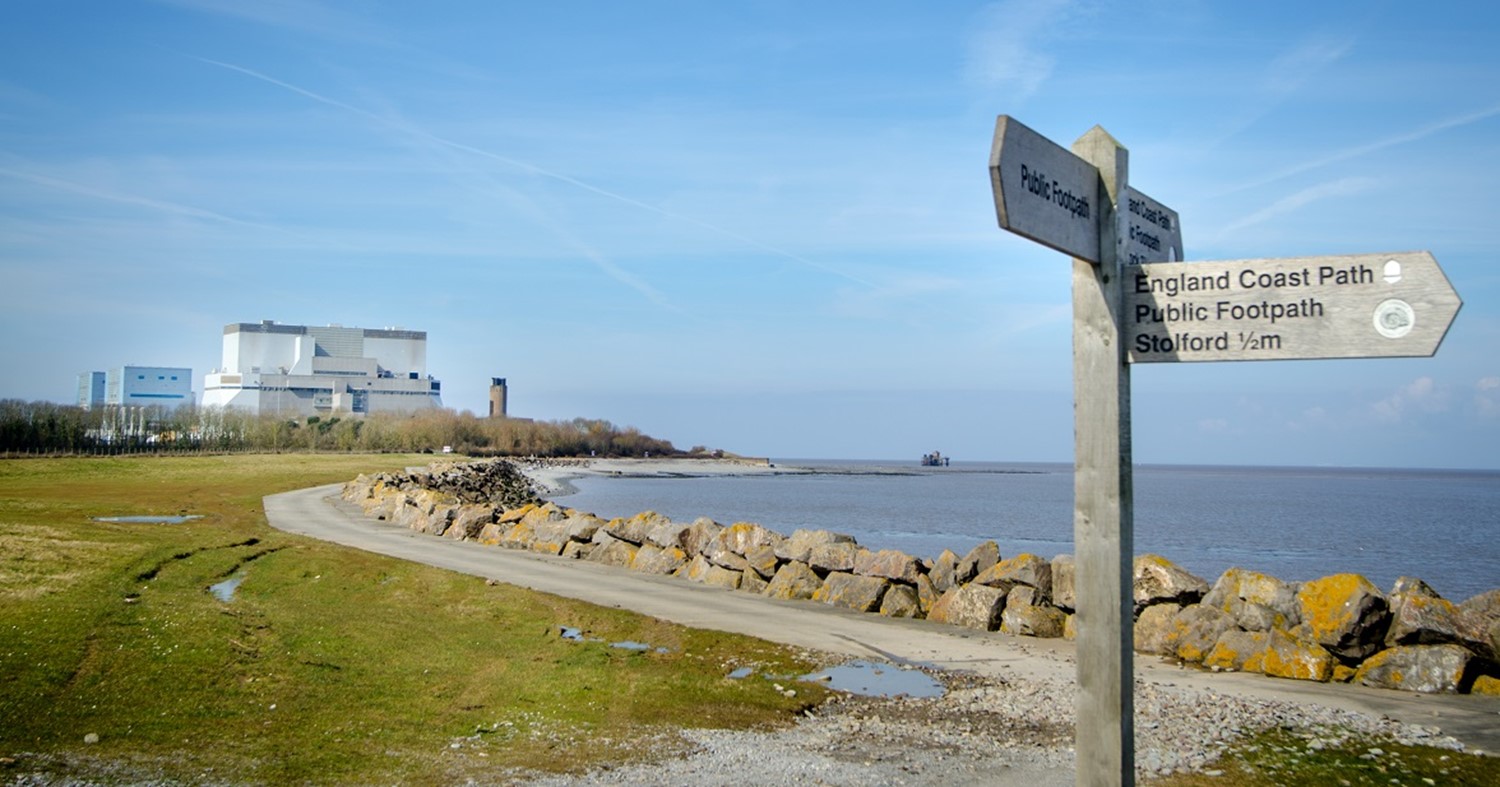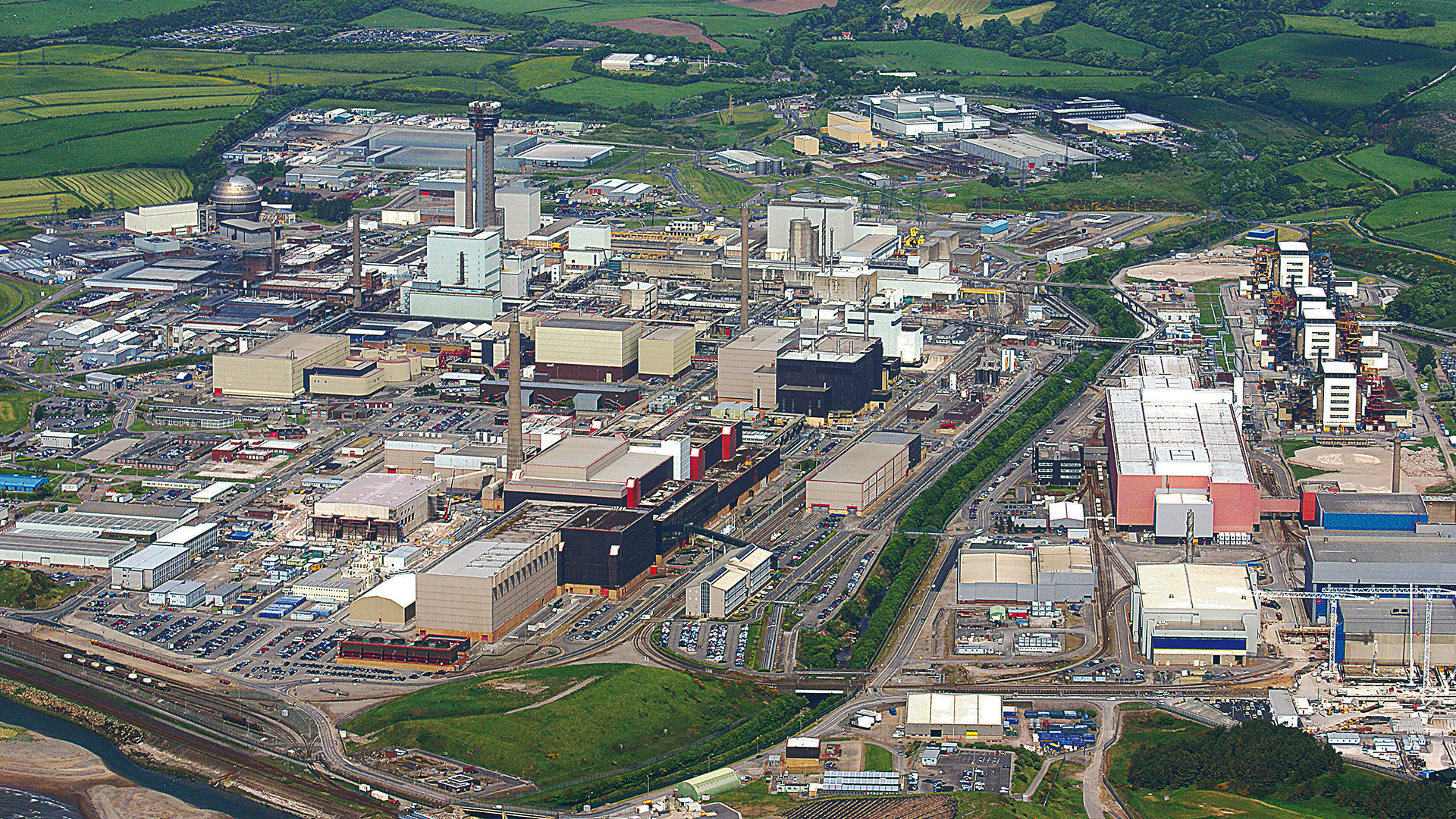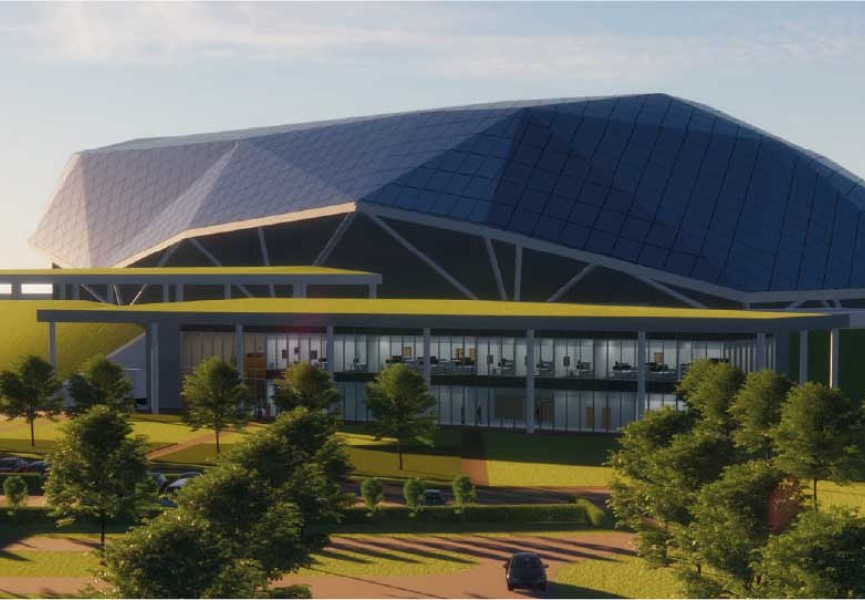EDF Energy’s Hinkley Point B nuclear power plant, in Somerset, England. (Photo: EDF Energy)
The U.K. government’s Office for Nuclear Regulation has granted EDF Energy formal consent to decommission the Hinkley Point B nuclear power plant in Somerset, England. The two-unit advanced gas-cooled reactor was permanently shut down in August 2022, and site owner EDF applied to ONR for decommissioning consent in August 2024.
The Sellafield nuclear site in Cumbria, England. (Photo: NEA/OECD)
Despite progress made over the past years, the United Kingdom’s Nuclear Decommissioning Authority (NDA) has not seen an adequate return on investment in cleaning up the Sellafield nuclear site on England’s Cumbria coast, according to a new report by the U.K.’s National Audit Office, which scrutinizes government spending.
Rendering of a Rolls-Royce SMR plant. (Image: Rolls-Royce SMR)
The United Kingdom’s nuclear regulators—the Office for Nuclear Regulation (ONR), the Environment Agency, and Natural Resources Wales (NRW)—have announced the completion of step one of their generic design assessment (GDA) for Rolls-Royce SMR’s 470-MWe small modular reactor design and the start of step two, which is expected to last 16 months.
EDF Energy’s Hartlepool nuclear plant, in northeastern England. (Photo: Wikipedia/Geni)
EDF Energy, owner and operator of the United Kingdom’s nuclear reactor fleet, announced last week that it intends to keep its Hartlepool and Heysham 1 stations in operation to March 2026—two years past their previously scheduled 2024 retirement dates. EDF added that an additional 12 months of operation beyond 2026 is being contemplated.
Artistic rendering of a Rolls-Royce SMR plant. (Image: Rolls-Royce)
Just one week after entering into an exclusive agreement with a Dutch nuclear development company to deploy small modular reactors in the Netherlands, U.K.-based Rolls-Royce SMR has announced the signing of a memorandum of understanding with Škoda JS to explore “areas of collaboration” for SMR deployment in both the Czech Republic and elsewhere in Central Europe.
From left: Bas Sujis (ULC-Energy), Sophie Macfarlane-Smith (Rolls-Royce SMR), Joanna Roper CMG (U.K. ambassador to the Netherlands), Alan Woods (Rolls-Royce SMR), and Dirk Rabelink (ULC-Energy). (Photo: Rolls-Royce SMR)
The United Kingdom’s Rolls-Royce SMR has signed an exclusive agreement with ULC-Energy—a Dutch nuclear development company established in 2021—to deploy small modular reactor stations in the Netherlands. (ULC stands for Ultra Low Carbon.)
Artist’s rendering of a Rolls-Royce SMR plant. (Image: Rolls-Royce SMR)
U.K.-based reactor developer Rolls-Royce SMR last week announced a list of six potential sites for its first small modular reactor factory. According to the company's announcement, the factory—the largest and most complex of three such facilities envisioned by the company—will manufacture the SMR vessels.
[Click to view full image] Cutaway of the HPR1000 design. (Image: CGN)
The Office for Nuclear Regulation (ONR) and the Environment Agency (EA) have found the UK HPR1000 reactor suitable for construction in the United Kingdom, the regulators jointly announced last week.
The first steel ring section of the Unit 2 reactor building was installed in November 2021. (Photo: EDF Energy)
The United Kingdom’s Office for Nuclear Regulation (ONR) has granted permission for the start of bulk mechanical, electrical, and HVAC component installation work at the Hinkley Point C site in Somerset, England, where two 1,630-MWe EPRs are under construction. Thus far, most of the activity at Hinkley Point C has been in the field of civil construction.
This new phase, according to ONR, will require a workforce of up to 4,000 during peak times, including welders, pipe fitters, and electricians. The work is to be accomplished over a three-year period, with NNB Genco—the EDF Energy subsidiary set up in 2009 to build and operate Hinkley Point C—teaming up with four suppliers: Balfour Beatty Bailey, Doosan, Cavendish, and Altrad.
Artist’s conception of the UK SMR consortium’s small modular reactor. (Image: Rolls-Royce)
The UK SMR consortium last week revealed the latest design and power upgrade—from 440 MW to 470 MW—for its proposed small modular reactor. According to the consortium’s lead company, Rolls-Royce, the “refreshed” design features a faceted roof, an earth embankment surrounding the reactor to integrate with the landscape, and a more compact building footprint.


-3 2x1.jpg)





.jpg)



